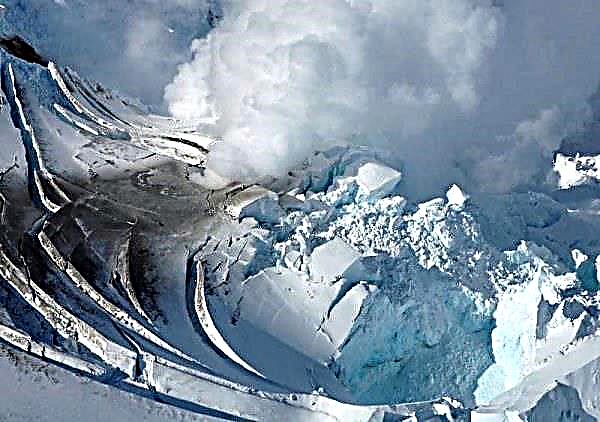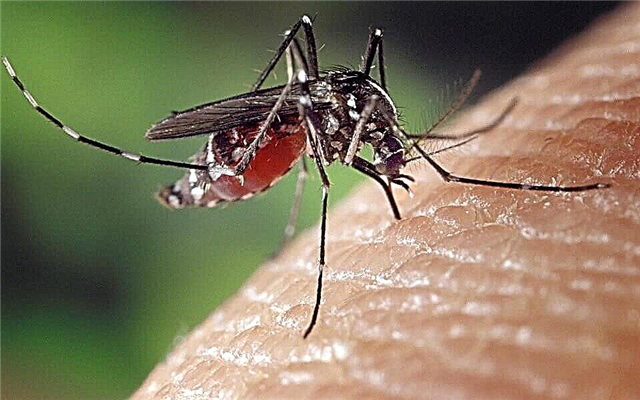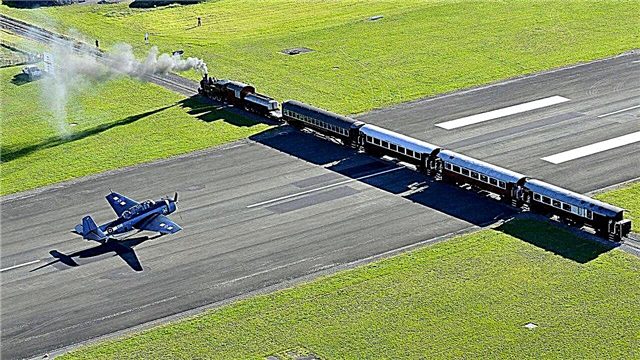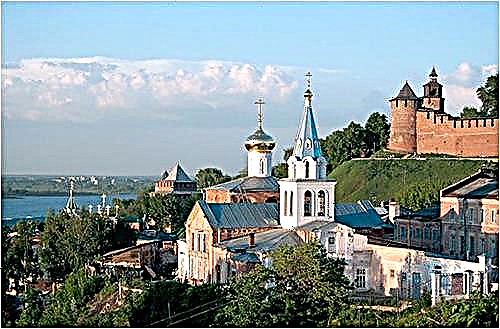The insignificance of man is nowhere felt so much as in the face of the elements. And the murderous beauty of volcanoes just can not help but admire. So, your attention is invited to the five most beautiful volcanoes on the planet.
Hualalai (Hawaii, United States)
 The diameter of the crater of this volcano is about 4.5 kilometers, which makes it the largest of the active volcanoes on Earth. “Lunar” landscapes and fantastically frozen lava are of the greatest interest to tourists and nature lovers. Fascinating excursions are organized here, thanks to which you can find many photos of this volcano and even its eruption, captured on video. According to ancient beliefs of local peoples, Hualalai is considered the habitat of the goddess of volcanoes Pele. Lava formations are also named after her. Drops of lava, which, after cooling, froze in the form of a tear, were called "Pele's tears", while the strands of volcanic glass, which were formed during the rapid cooling of lava flowing into the ocean, were called "Pele's hair."
The diameter of the crater of this volcano is about 4.5 kilometers, which makes it the largest of the active volcanoes on Earth. “Lunar” landscapes and fantastically frozen lava are of the greatest interest to tourists and nature lovers. Fascinating excursions are organized here, thanks to which you can find many photos of this volcano and even its eruption, captured on video. According to ancient beliefs of local peoples, Hualalai is considered the habitat of the goddess of volcanoes Pele. Lava formations are also named after her. Drops of lava, which, after cooling, froze in the form of a tear, were called "Pele's tears", while the strands of volcanic glass, which were formed during the rapid cooling of lava flowing into the ocean, were called "Pele's hair."
Kilimanjaro (Tanzania)
 Who does not remember photos of volcanoes from school geography textbooks? Probably all of them were made by Kilimanjaro, because this gray-haired giant has an almost perfect cone shape. This amazingly beautiful mountain can be seen even from space. The name "Kilimanjaro" in literal translation means "a mountain that sparkles." However, now the snow cap covering its top is melting at an astonishing rate. Over the past hundred years, the amount of ice and snow at its peak has decreased by 82%, and now scientists predict its complete disappearance literally in the next 7-9 years. So if you want to see Kilimanjaro like you used to in textbooks, you should hurry up!
Who does not remember photos of volcanoes from school geography textbooks? Probably all of them were made by Kilimanjaro, because this gray-haired giant has an almost perfect cone shape. This amazingly beautiful mountain can be seen even from space. The name "Kilimanjaro" in literal translation means "a mountain that sparkles." However, now the snow cap covering its top is melting at an astonishing rate. Over the past hundred years, the amount of ice and snow at its peak has decreased by 82%, and now scientists predict its complete disappearance literally in the next 7-9 years. So if you want to see Kilimanjaro like you used to in textbooks, you should hurry up!
Vesuvius (Naples, Italy)
 The eruption of Vesuvius 79 AD, perhaps the most famous in history. The catastrophe in one day completely destroyed the ancient cities of Pompeii, Stabia and Herculaneum. Nowadays, Vesuvius looks quite harmless, and its name itself now increasingly causes gastronomic associations. But still Vesuvius is still considered the most dangerous volcano on the planet. And he is still active: the last eruption happened in 1944. Vesuvius is located in the south of the Apennine Peninsula, just 15 kilometers from Naples, nearly a millionth.
The eruption of Vesuvius 79 AD, perhaps the most famous in history. The catastrophe in one day completely destroyed the ancient cities of Pompeii, Stabia and Herculaneum. Nowadays, Vesuvius looks quite harmless, and its name itself now increasingly causes gastronomic associations. But still Vesuvius is still considered the most dangerous volcano on the planet. And he is still active: the last eruption happened in 1944. Vesuvius is located in the south of the Apennine Peninsula, just 15 kilometers from Naples, nearly a millionth.
Eyyafyatlayokudl (Iceland)
 Despite the fact that without a fracture of the tongue, only the venerable tongue-teller can pronounce the name of this northern rowdy on the first attempt, his eruption in 2010 brought him worldwide fame. This Eyyafyatlayokudl during the eruption threw so much ash into the atmosphere that it provoked a worldwide transport stagnation. Now, in the mountains of Iceland, everything is quite calm, flights go on schedule, and the once raging Eyyafyatlayokudl can be seen from a helicopter flight.
Despite the fact that without a fracture of the tongue, only the venerable tongue-teller can pronounce the name of this northern rowdy on the first attempt, his eruption in 2010 brought him worldwide fame. This Eyyafyatlayokudl during the eruption threw so much ash into the atmosphere that it provoked a worldwide transport stagnation. Now, in the mountains of Iceland, everything is quite calm, flights go on schedule, and the once raging Eyyafyatlayokudl can be seen from a helicopter flight.
Volcanoes of Alaska (USA)
 A series of snow-covered volcanoes is so active that a separate observatory was created to study their behavior. In 2009, a series of eruptions occurred in Alaska, for the entire period of which a huge cloud of volcanic ash soared up to a height of about 15 kilometers, blocking all air traffic of Cook Bay. But now these volcanoes, as well as their Icelandic counterpart, can be admired from the height of a helicopter.
A series of snow-covered volcanoes is so active that a separate observatory was created to study their behavior. In 2009, a series of eruptions occurred in Alaska, for the entire period of which a huge cloud of volcanic ash soared up to a height of about 15 kilometers, blocking all air traffic of Cook Bay. But now these volcanoes, as well as their Icelandic counterpart, can be admired from the height of a helicopter.












